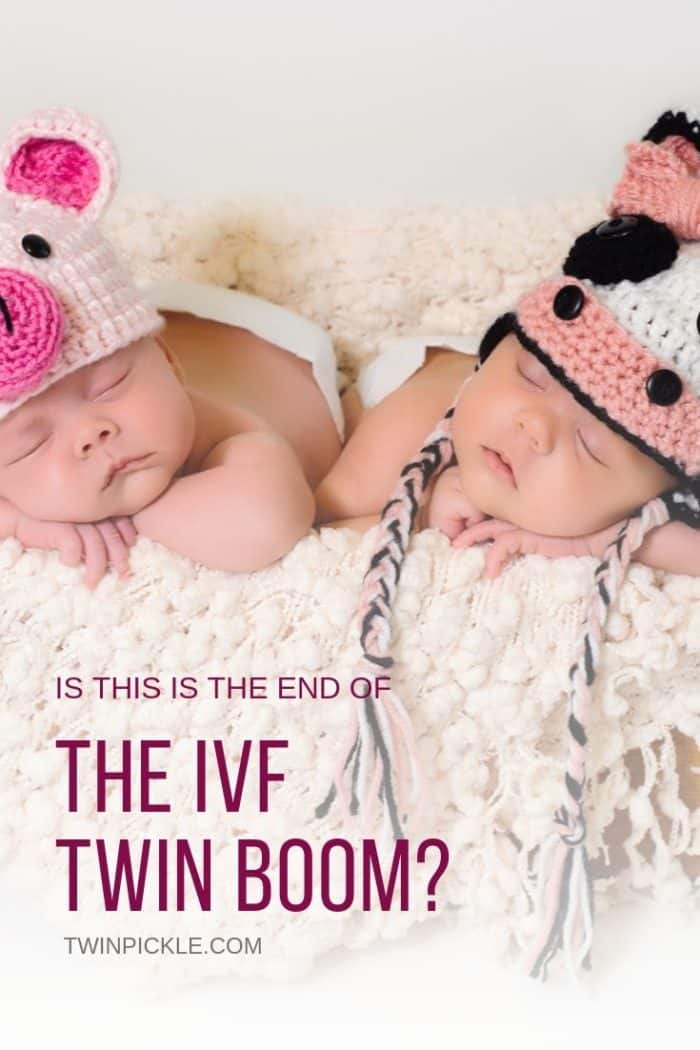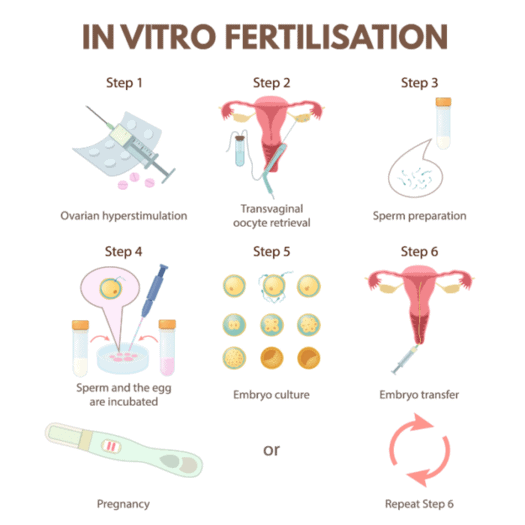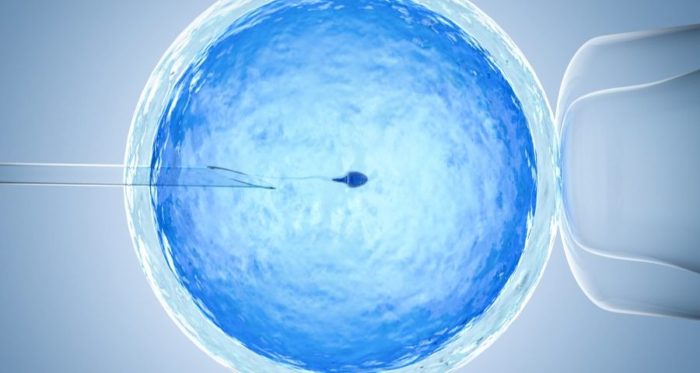Advancement in IVF methods is causing a downturn in the US twin boom. The rate of twin births in the US has exploded since the 1980s, likely due to mothers having babies later, and the development of infertility treatments. Now, with fewer parents and doctors opting for multiple embryo transfer, the number of IVF multiple births is declining. But with mothers continuing to start families at a mature age, will the twin bubble burst altogether?

Improvements in IVF Treatment
In 1978 the first ‘Test-Tube Baby’, Louise Brown, was born. Since then, around 6 million babies have been born worldwide through In-Vitro-Fertilization (IVF), over 1 million in the US alone. Success rates for IVF vary, and are strongly swayed by a woman’s age. The success rate for women under 35 is around 40%. However, women aged over 42 are told they only have a 4% success rate.
In order to increase the chances of a successful birth, it has been common to transfer multiple embryos during the IVF cycle. Tiring emotionally and physically, IVF is also expensive. The average cost of an IVF cycle is $12,000 before medication, so doubling the chances of success by doubling your embryo transfer seems like a smart idea. But multiple births come with risks. Twin moms have increased risk of high blood pressure, gestational diabetes and postpartum depression. And twin babies are more likely to be born prematurely, which has many associated health risks.

“As IVF has gotten more advanced, we’re able to make smarter choices,” said Natalie Crawford, a reproductive endocrinologist at Aspire Fertility Austin in Texas.
Abbott, B. 2019. Rates of Twin Births in U.S. Drop After Decades of Increases. Wall Street Journal.
Advances in techniques are improving the chances of success with IVF. In turn, parents and doctors feel more confident in the decision to transfer a single embryo, leading to a reduction in twin birth rate overall. It seems the IVF twin boom is on the decline.

The percentage of embryo-transfer procedures that transferred only a single embryo roughly doubled from 2013 to 2016 in all age brackets above 35 years old, and professional groups now recommend the practice in most cases.
Abbott, B. 2019. Rates of Twin Births in U.S. Drop After Decades of Increases. Wall Street Journal.
Identical Twinning in IVF
Even if you choose to implant a single embryo, there is still a chance of zygotic splitting, resulting in identical twins. No one knows for sure why embryos split, but it is known that rates of identical twins are slightly increased by assisted reproductive treatment. Evidence suggests lab manipulation of embryos such as assisted hatching and maturing the fertilized egg before transfer lead to an increased risk of twinning.
However, as these techniques are improved the increase in identical twinning with IVF is also on the decline.
Although the use of single embryo transfer has increased worldwide, the prevalence of zygotic splitting pregnancies has not. This may be because ART techniques, and also the cultures in which blastocysts are matured in the lab, have improved in recent years, reducing the stress on embryos and leading to a decrease in the risk of zygotic splitting.
European Society of Human Reproduction and Embryology. Why single embryo transfer during IVF sometimes results in twins or triplets. Medical Express.

Future Advances in IVF Technology
IVF is big business and new technology and techniques are constantly being developed. Scientist Afrouz Ataei at Florida Atlantic University is developing a sperm sorting microchip device, which selects the fastest, strongest sperm to give the best chance of successful fertilization. The current method for sorting sperm involves spinning at high-speed which can damage the delicate DNA inside the sperm cell’s head.
The delicate process of IVF has many steps, and during each step, there is a chance of cells and DNA becoming damaged. Improvements in the techniques we use will undoubtedly continue to improve the success rate of IVF.
Age, Fertility Medication and the Twin Boom
While advances in IVF may be decreasing the rate of twin births, mothers are still choosing to have babies later in life. In 1980, women aged 30 and over accounted for around 20% of all births, compared with more than 46% in 2017. San Francisco is home to the US’s oldest moms, with the average age of their first birth being 32. Advances in birth control, more women going to college and pursuing professional careers are just some of the reasons mothers are starting families later in life.
As well as the wonders of Science giving a helping hand, older moms are more likely to naturally conceive dizygotic (fraternal) twins. Women over 35 tend to produce higher levels of a hormone called FSH (follicle-stimulating hormone). This increase in FSH is thought to be a reaction to naturally decreasing fertility as women head towards menopause. This ‘overshooting’ can cause the development of multiple ovarian follicles leading to the release of multiple eggs.

Clomid, Letrozole & Gonadotropins
While fertility experts may be able to control the number of embryos transferred during an IVF cycle, they have less control over the body’s response to fertility drugs. Letrozole (brand name Femera) was originally designed to treat breast cancer but has also become a treatment for infertility. Letrozole suppresses estrogen production, causing the body to respond by producing more FSH. Similar to the natural aging process mentioned above, this can lead to multiple follicles, eggs and therefore babies. Clomid works similarly to block the body’s estrogen receptors.
Gonadotrophins are injectable medications used to stimulate ovulation. These medications can be used alone or in preparation for an IUI or IVF treatment and usually involves injecting FSH to stimulate the follicle and a ‘trigger shot’ of HCG to cause ovulation. While the overall chances of conceiving twins are around 3%, it is up to 30% when taking gonadotrophins. The use of Clomid and letrozole increase your chances of twins to 12%.
Is the IVF Twin Boom Over?
With moms continuing to start families later and receive fertility medications, we are unlikely to see a dramatic drop in twin birth rates. But improvements in fertility treatments seem to have brought an end to the ever bulging twin bubble. The IVF twin boom may be over for now.
For Statistics on US Births from 1980-2017:
National Vital Statistics Reports, Vol. 67, No. 8, November 7, 2018 (page 45)
National Vital Statistics Reports, Volume 60, Number 1, November 3, 2011 (page 65)
